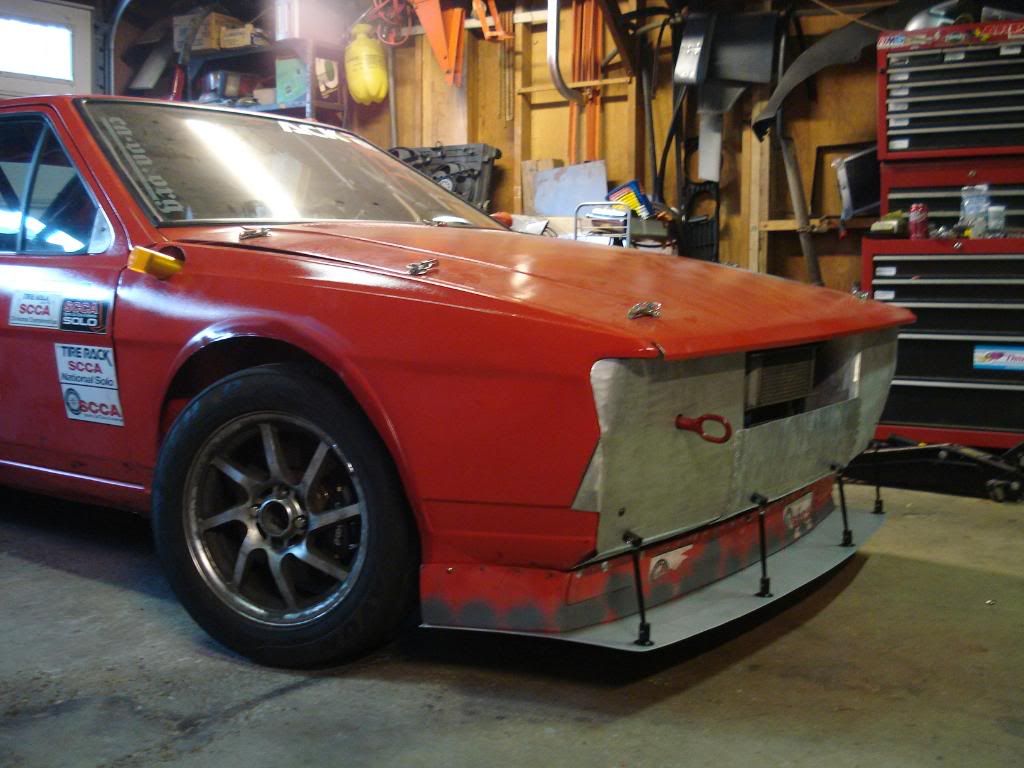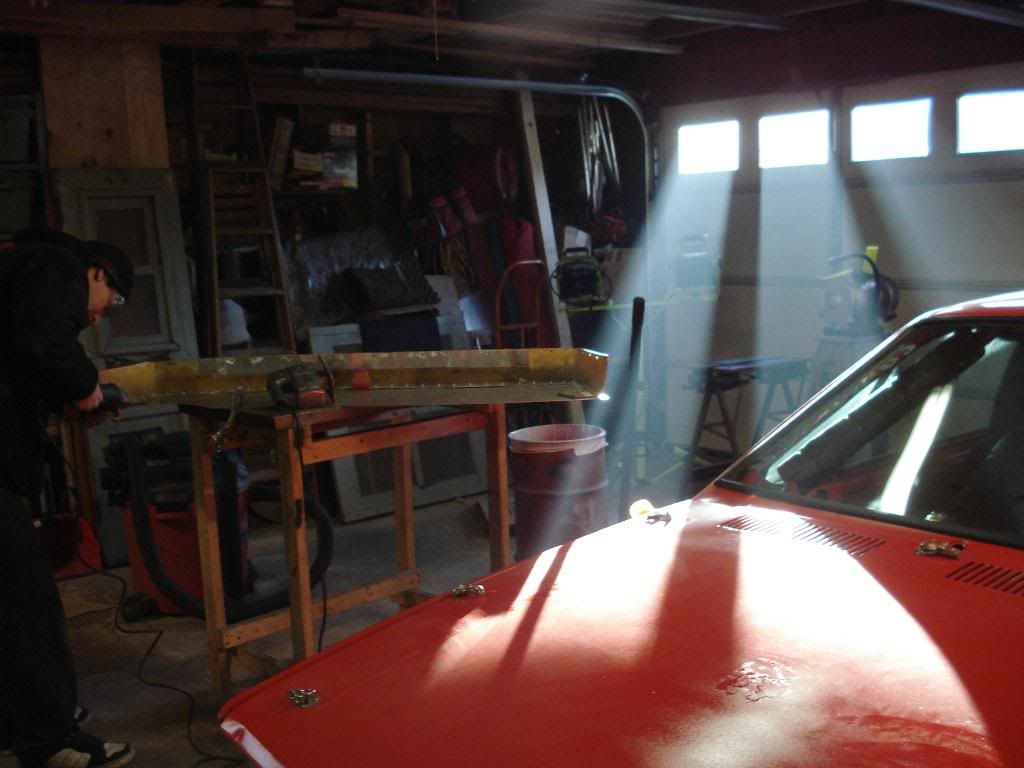spoiler update
You are a rolling Pegasus catalog. Hawt. When do we design the dive planes?
Function > form definition?
Rawr!
:rofl Seriously
SO MANY HOOD PINS
Is that bedliner paint i see??
Sorry…my car actually see’s sustained speeds over 100+ mph…the hood lifts off without them.
Pegasus>world
I didn’t say they were on there for looks, I just commented on the insane amount of them.
wow that thing is fugly for sure!
pretty bad ass id say . function over looks
Good Job
uprights! :banghead
Threaded rods look great, but your scoop does not hold water, and it should.
The side plates should extend to the front of the lip and as high as you have balls. In your example you could gain a benefit from going all the way to the hood-line, but that would look bad.
Notice how the wing has an end-plate all the way to the front and top. This is how it should be:

I’m working on it bitch…you gonna be up this weekend?
Why would you put side plates on a front air dam? You are creating drag city if there is no pressure area right behind the slitter itself (called air dam because of it) because the bumper is there. All straight vertical end plates would do here is impede air flow on the front of the car.
They are on rear wings for stability. There’s low pressure area behind the wing so the air passing along the end plate.
Instead, put dive planes to improve stability and reduce drag over the monster tires without increases drag at the very front of the car.
that thing is gonna feel like a brick going fast, let off the gas= loss of 30+ mph haha
Actually it now has much less front drag than your 1994 Sentra.
thats why i said that cause i know my car feels like a brick…that thing sucks, when im behind tractor trailers its all over the place
+1 on not needing them on the front of this car.
My take on this crap if it’s worth anything here. Dubbed spill plates for a reason, they regulate even airflow across the airfoils entire surface above and below without any flow disruption near the airfoils extremities(reducing flow roll off near the foils ends) and reduce foil drag. Low speed airfoil technology there. One of the factors in the downward extension of the plates is to dictate the airflow underneath the wing and regulate downforce. Proper airfoils do not create DF by just damming air on top of them but as an inverted wing which provides negative lift with low drag. By controlling the amount of airflow under the airfoil you can control the wings “lift ability”, just in an inverted state. The plates are also used in conjunction with the lower wing foil to aid air extraction from under the car(F1) and reduce drag at the tail from the converging flows ![]() There’s alot of big time tech in F1 airfoil technology that’s WAY over my head to even bother understanding(like VG placement to direct core flow to other aero), but then again I’m a closed wheel, GE chassis aero guy
There’s alot of big time tech in F1 airfoil technology that’s WAY over my head to even bother understanding(like VG placement to direct core flow to other aero), but then again I’m a closed wheel, GE chassis aero guy ![]()
Applying these to a home brewed flashing front splitter on a car is a little off kilt IMO(nothing against your work Tom…LOVE the Grassroots/Racer Wholesale/Pegasus Racing look!!!). If his car was open wheel then I could maybe understand their use for directing airflow over the wheels to reduce frontal drag but again, this is elevated speed dependent…
All of your assertions would be correct if there was any flow over the splitter. There should be none.
The front of the car is some 18 inches of flat plate flying thru the air. It will push a parabolic boundry layer along with it at the front.
At low speeds the parabola is low and flat, and the stagnation pressure is insignificant. Also the length of the spoiler will greatly exceed the height of the boundary layer. At low speeds the splitter will do very little.
As speeds increase, the boundary layer will grow, as well as the stagnation pressure. At this point the purpose of the side plates would be to prevent air from spilling over the sides and hold that stagnation pressure over a larger area. Any flat horizontal area with pressure acting on it will produce some sort of down force.
I expect the effects to be very small at even high speeds. but it will do something. What little it will do will be enhanced with side plates.
Everything you guys are talking about involves flow. The design intent was to capture stagnation pressure on an unbalanced horizontal area.
I agree a wing with flow would work better. Side canards would also work better at all speeds too. It’s just not the purpose of this spoiler-lip thingy.
Over the weekend there were some side templates made, and then put on the shelf. The angles and areas of the front end are not exactly ideal. It’s hard to get unbalanced areas because the front slopes forward and up. There is not a lot of the wing that extends past the hood line or sheet metal.
Basically it looks cool, and might do something. It is not hurting much with no side plates.
And we vacuum-bled the brakes, after nearly 7 days the brake fluid was way too old for Tom’s tastes. Tom knows all about the virtues of fresh brake fluid.
Disclaimer: I’m no aerodynamicist obviously.
If that’s true, then why dont you see it on any other production based race cars? Even on DTM cars, which are heavvvvvilly aero dependent, they do their best to remove vertical faces perpendicular to the bumper (sticking out) and instead make it a “slipperier” face with dive planes on the side? The idea being the dive planes is stability, the same goal Tom’s aiming for, but with minimal drag.
It’s so commonplace, it’s now the conventional design for sedan aero.
I don’t know what your talking about Jesse, could you shoot me a pic?
I would also like to mention its a fucking scirocco. It is not the new Audi R15, or the latest F1 wing design. It’s a fucking scirocco.
Mission #1 is getting on the trailer under its own power.
Mission #2 is ???
Mission #3 is F1 Aero design.
It’s not quite at mission 3 yet.
:rofl Understood, but if its going to be made, might as well make the best possible design, which is what we’re talking about.
This pic was the easiest example I could find. Isnt the edge of stagnation pressure = air moving "backwards = drag? Isnt one of the goals of front area to minimize that area of stagnation pressure in front of the car? Lateral stability is then controlled at the point where air begins to tumble down the sides of the car. The dive planes I’m referring to (the yellow guys in the picture) is what I was suggesting to do to add that stability and reduce drag over the monster tires. If I’m understanding you correctly, you’re voting to put them vertical, on the edge of the splitter like the one I drew in Paint…
My point being in the last post was that you never see vehicles with a vertical plane like that on the front. The reasoning I used 5-6 posts ago was just my best assumption as to why.




